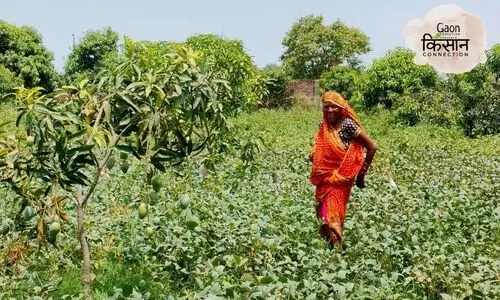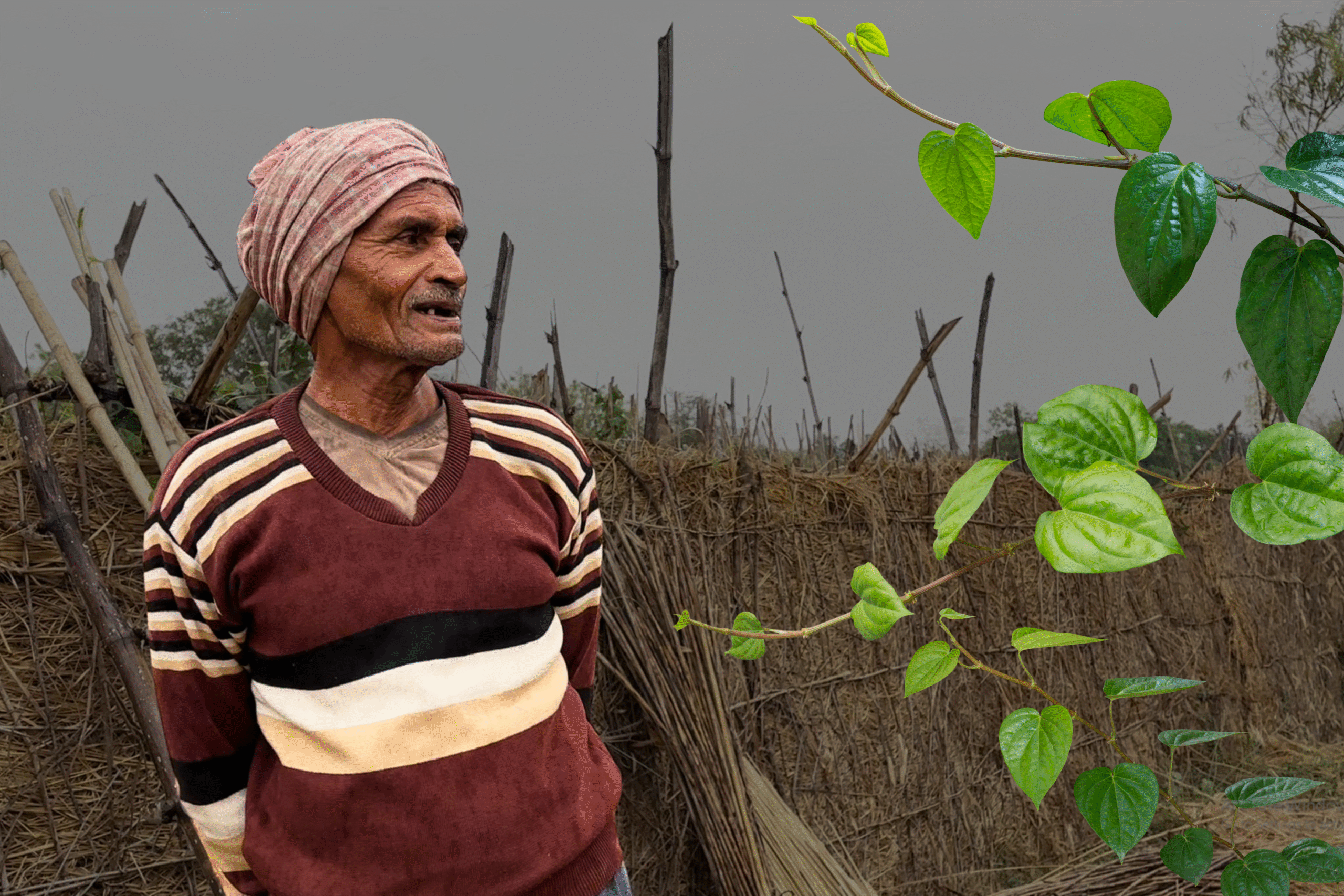Unnao and Mahoba, Uttar Pradesh
Half-bent from her waist, septuagenarian Ram Janki plucked beans from a patch of land. She had been plucking beans all morning when Gaon Connection met her past noon in her village Kurmapur in Unnao district of Uttar Pradesh.
Despite the peak afternoon heat, the 72-year-old farmer did not stop working though she complained of a headache and weakness.
Just a couple of days back, a number of people had died in Ballia and Deoria districts of the state during extreme heat conditions and the heatwaves that were sweeping across parts of north India in mid-June. The silent sufferers of these heatwaves are a large chunk of the rural women, such as Ram Janki, who work as farm labourers.
After she had finished plucking the beans, Ram Janki gathered them in the pallu of her synthetic saree. Without even taking a break to sip water, she moved on to her next chore of threshing the dry moong (green lentil) pods to pop out the lentils.
“Din bhar lag jayega itni [10 kgs] moong peetne me [It takes all day to work on these 10 kgs of lentils],” said Ram Janki, as she wiped her sweaty face with her saree. “If we keep it for later, the moisture will allow the fungus to grow and the entire harvest will be spoiled,” she explained.
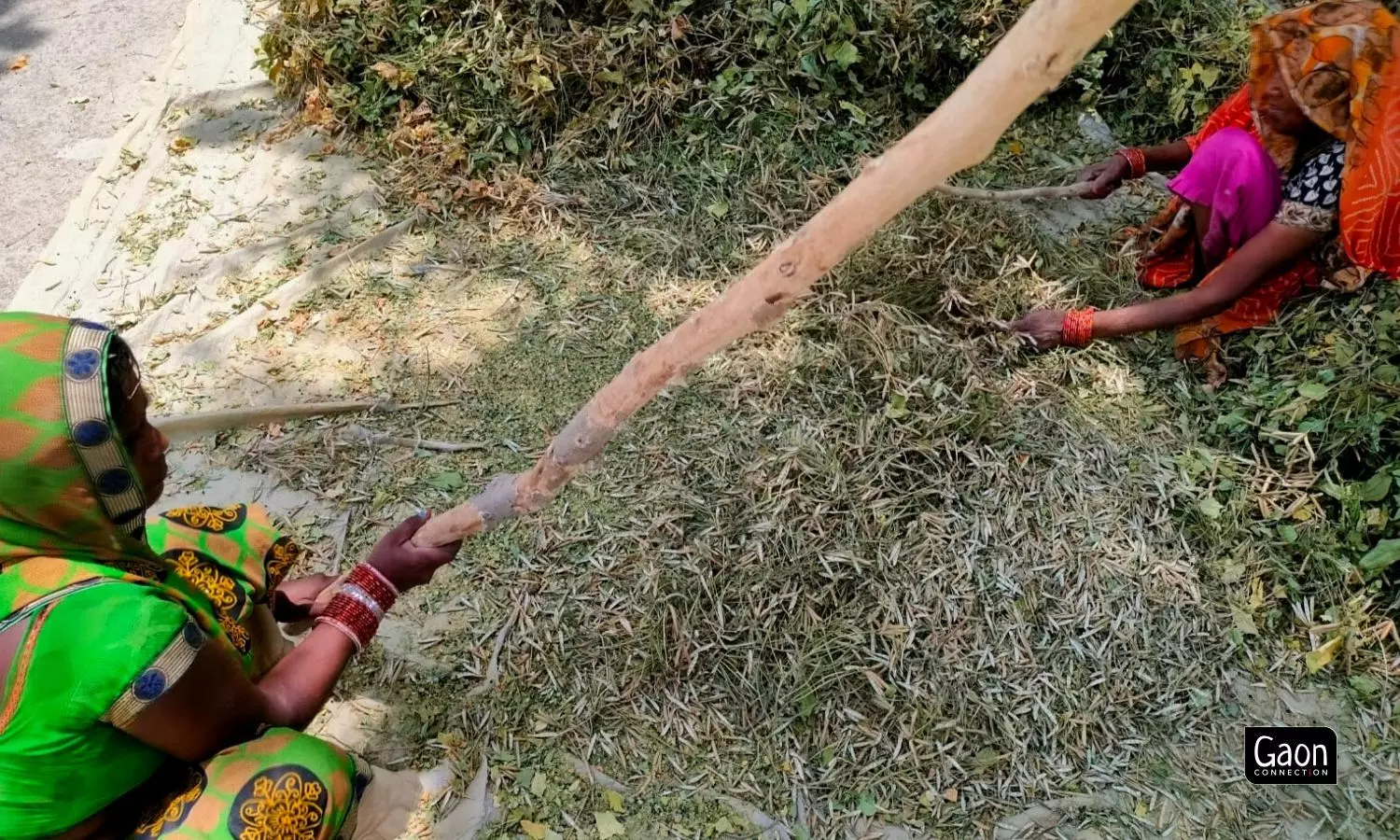
India is an agrarian economy with about 54.6 percent of total workforce engaged in agricultural and allied sector activities, as noted in the Census 2011.
It was a race against time as 110 kilograms (kg) of moong had to be thrashed before the arrival of the monsoon, which had already reached the southern coast of the country. So far, only 10 per cent of the threshing works had been completed. Ram Janki couldn’t-care-less about the heat, or her headache.
On being reminded that it was the elderly like Ram Janki who were most prone to having a heatstroke considering the age and underlying comorbidities, the farmer shrugged and said: “Then who will do moong peetna? What will I share with the batai landowner?”
Accompanying Ram Janki was 35-year-old Mohini, her daughter-in-law, who helped the former on the five bighas of land that had been taken on batai (lease). As part of the arrangement, the women had to share half of their crop harvest with the landowner.
Also Read: 68 dead, 500 hospitalised amidst extreme heat in UP’s Ballia. Where are the heat action plans?
India is an agrarian economy with about 54.6 percent of total workforce engaged in agricultural and allied sector activities, as noted in the Census 2011.
Rural women form the backbone of the country’s agriculture sector.
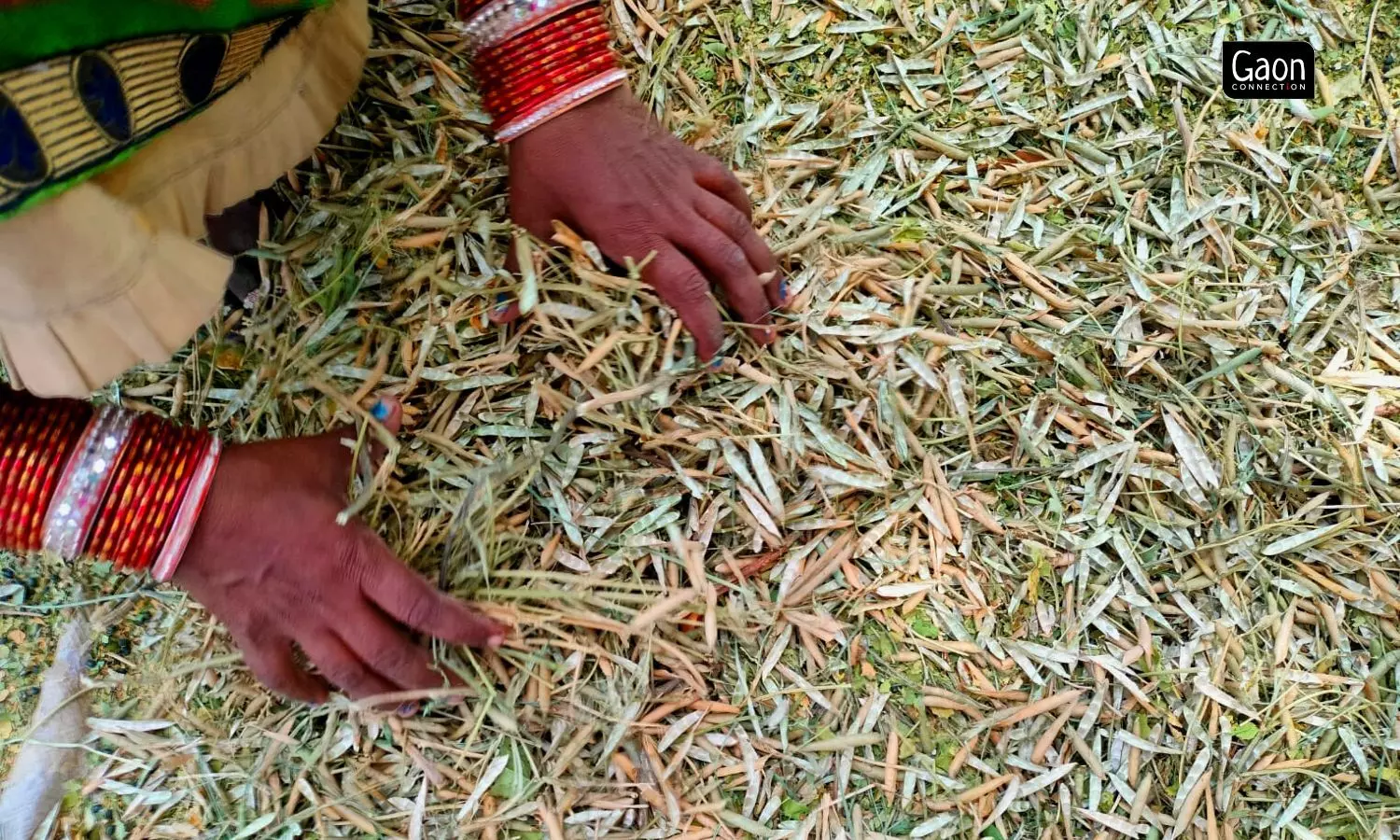
In a changing climate, with rising atmospheric temperatures and increasing heatwaves, women engaged in outdoor farming activities face the maximum brunt.
The annual report by the Ministry of Labour and Employment released in 2023, indicates that 41 per cent of the female workforce is involved in agricultural labour.
Additionally, data by Indian Council for Agricultural Research shows that women make up 75 per cent of those who produce major crops, 79 per cent of those who engage in horticulture, 51 per cent of those who do post-harvest work.
And in a changing climate, with rising atmospheric temperatures and increasing heatwaves, women engaged in outdoor farming activities face the maximum brunt.
“Most of the backbreaking and manual labour in agriculture is assigned to women which puts them at the forefront of the climate change and oppressive heat,” said Shilpa Vasavada, a gender and community institutions specialist.
“Heatwaves are increasing both in duration and intensity, which is not only affecting their health but also their earnings as the majority of these women work as daily wage labourers,” she told Gaon Connection.
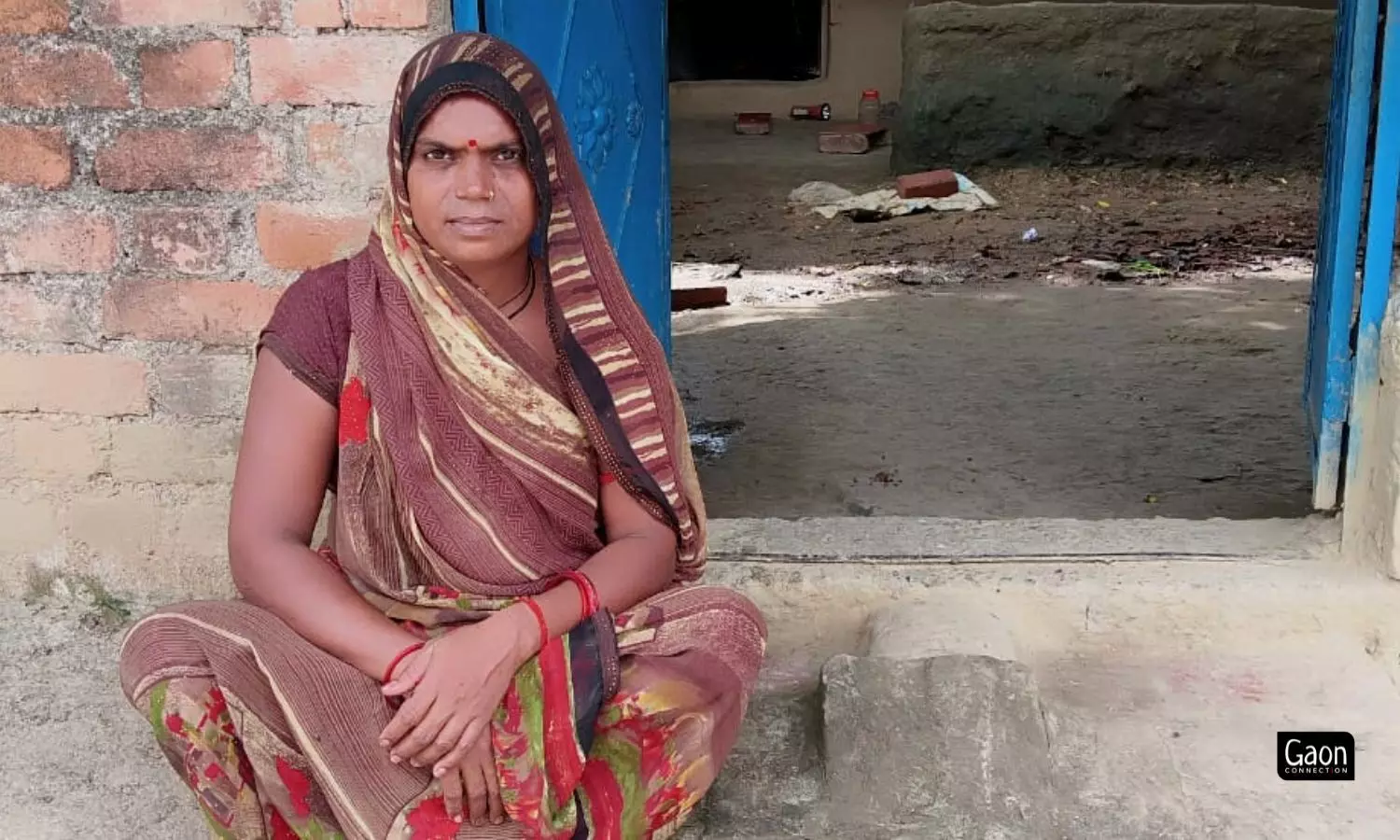
Seeta’s dwindling health made her miss out on 23 workdays, amounting to a loss of Rs 250 per day, collectively adding to Rs 5,750.
Over 200 kilometres from Ram Janki’s village lies Mirtala village of Mahoba district, where Seeta, a mother of four, had to miss 23 days of workdays as oppressive heat in April this year, when she was engaged in harvesting wheat and peas, made her sick. On April 14, Seeta collapsed on the farm she was working on.
“Do botal pani chada tha [I was injected with two bottles of glucose]. Soon after, I contracted high fever and shivers through my legs,” narrated the 30-year-old farm labourer.
When Seeta fell sick, India Meteorological Department (IMD) had alerted East Uttar Pradesh (where Mahoba is located) of heat waves and warned people to stay indoors. But agricultural labourers like Seeta had no option. Afterall, her income plays a considerable role in running her family of six.
Seeta’s dwindling health made her miss out on 23 workdays, amounting to a loss of Rs 250 per day, collectively adding to Rs 5,750. Moreover, her medical expenses came up to Rs 1,700, adding to her financial burden.
“Even now I don’t feel fully recovered. My legs feel weak and I don’t have the energy to take up any daily-wage work,” she told Gaon Connection.
Rising heatwaves in India
Under the influence of significant heatwaves rise during early summers in India, the Climate Transparency Report 2022 projects around 142 million more people than the 1986–2006 average to be annually exposed to heatwaves hazard; and 1.7 million more people expected to be exposed to crop failures.
“Small and marginal farmers, who comprise 85% of India’s farmer population, are particularly vulnerable,” the report emphasised.
Heat waves result in the loss of labour hours by preventing workers in occupations with physical labour from operating efficiently due to excessive sweating, exhaustion, and dehydration.
Between 2001 and 2020, India lost around 259 billion hours of labour annually due to humidity and heat waves, costing India Rs 46 lakh crores in total, as recorded by the Social Policy Research Foundation.
An April 2023 report by IMD said that “the frequency of heatwaves, their duration and their maximum duration are increasing, which is attributed to global warming”.
The Intergovernmental Panel on Climate Change (IPCC) model projections indicate an increase of about two heat waves and heat wave duration by 12-18 days by 2060.
The more concerning aspect is the Climate Trends Report 2022 that particularly mentions Lucknow, the capital of Uttar Pradesh to be among the cities predicted to reach wet-bulb temperatures of 35°C if emissions continue to rise.
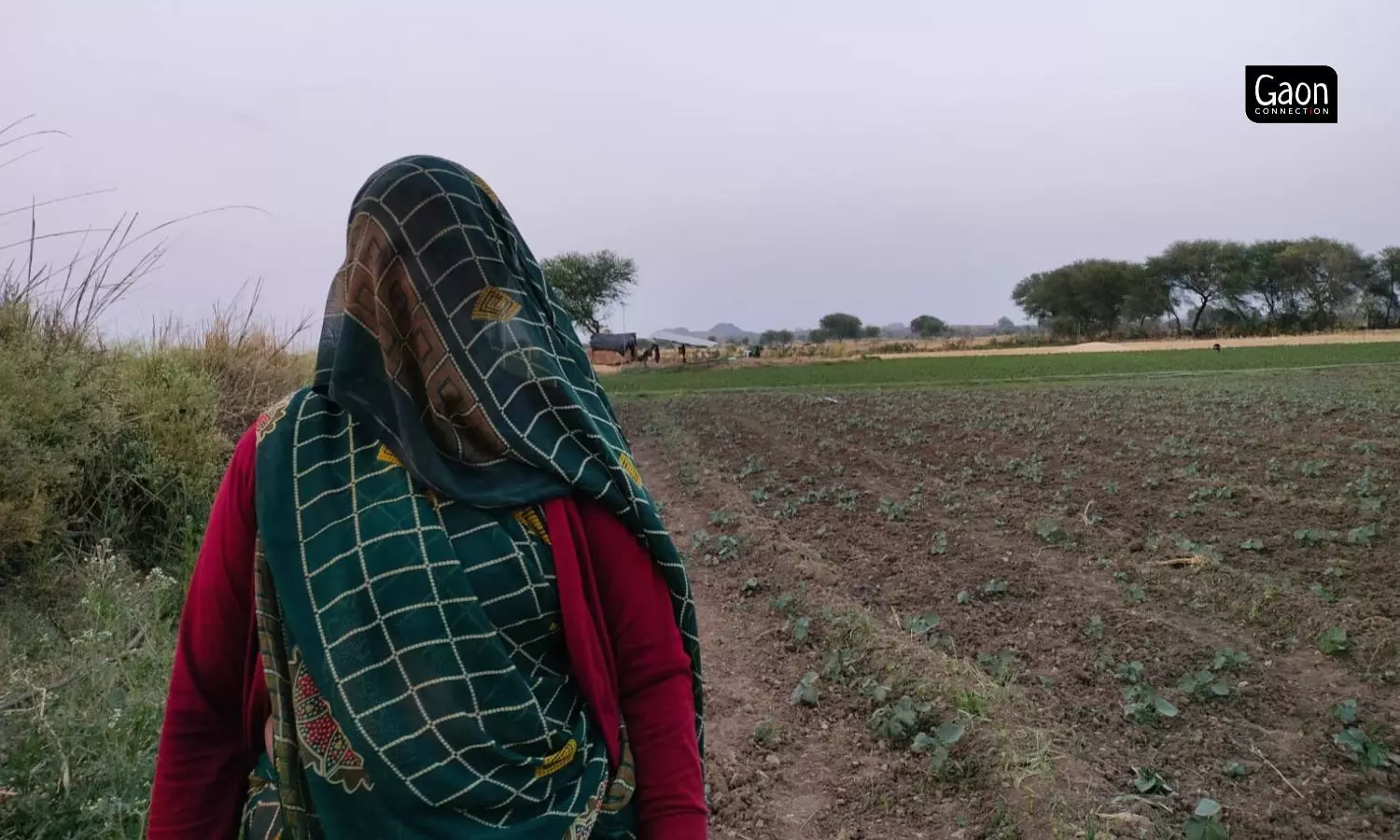
The climate change adaptation strategies proposed in most states for the agriculture sector lack a comprehensive approach to addressing gender-based issues within the sector.
Wet-bulb temperature is a combination of dry air temperature (as recorded on a thermometer) with humidity. It tells the point at which human bodies will be unable to cool themselves posing risks like heart strokes.
The report elaborates that “a wet-bulb temperature of 31°C is extremely dangerous for humans, while a value of 35°C is unsurvivable for more than about 6 hours, even for fit and healthy adults resting in the shade”.
“This could be fatal for outdoor workers like those in construction and employed in agricultural fields. Climate change is also causing migration, putting more burden on women in terms of household responsibility, agricultural-allied services and tackling their finances,” said Anjal Prakash, Research Director and Adjunct Associate Professor, Bharti Institute of Public Policy, Indian School of Business (ISB), Hyderabad. Prakash holds expertise in climate change and adaptation issues.
The International Labour Organization estimates that India will lose around 5.8 per cent of its total labour hours in 2030 due to heat and humidity. The loss of labour hours in the agriculture sector due to heat stress has severe implications for India.
Also Read: Several Indian states and cities boast of Heat Action Plans. But how good are they?
Women farm labourers at the receiving end
Predictably, heatwaves are taking a toll on the health of women farm labourers like Ram Janki and Seeta. Ram Janki’s 80-year-old husband Mani Ram recalled that she was terribly down with fever and loose motions, for which she wasn’t even ready to see a doctor.
“After much persuasion she went to a jholachap [quack] in the village to get some medicines. She hardly goes to the doctor whenever she falls sick,” he said.
Ram Janki belongs to the 90 per cent of India’s labour force, engaged in the informal sector and does not receive any social or health insurance. Her limited income makes her reluctant to spend on her health.
“I don’t fall sick, I am used to the heat,” Ram Janki told Gaon Connection.
About 200 kilometres away from Ram Janki’s village, Mithilesh Rekuar spent the whole day squatting to pluck out the weeds from the ladyfingers’ plants in Lamora village of Mahoba.
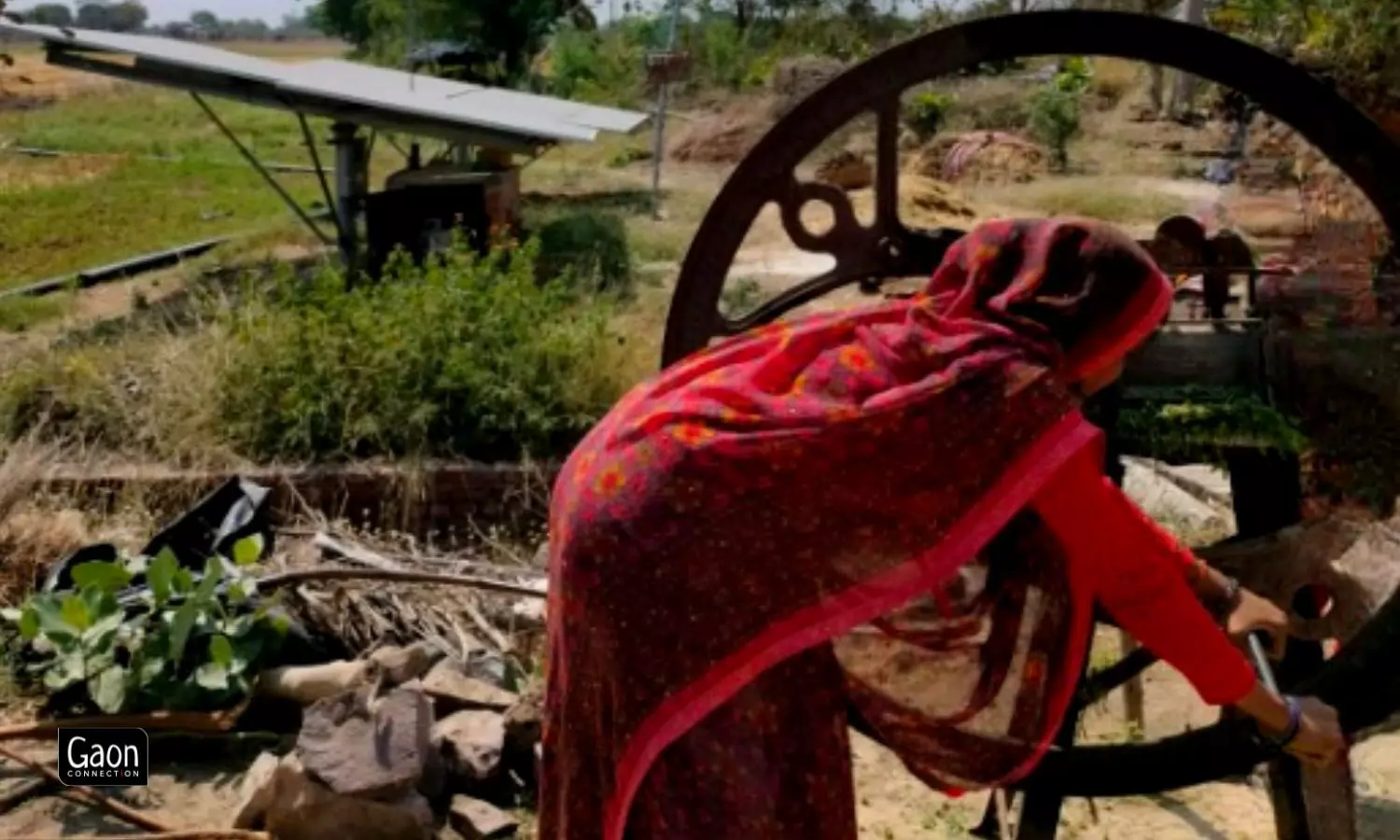
Heatwaves are increasing both in duration and intensity, which is not only affecting their health but also their earnings as the majority of these women work as daily wage labourers.
Mahoba lies in the Bundelkhand region prone to high heat during summers. Mithilesh Rekuar worked through the day in peak May, with merciless hot winds and a blinding sun. She had to keep her head and face covered with the ghoonghat of her saree.
“I can’t uncover my head and face no matter how hot it is because my brother- in-law also works nearby. I cannot remove the ghoonghat,” she told Gaon Connection.
Tedious manual activities such as transplanting of seedling, weeding, harvesting, transporting harvest, threshing, drying of hay, are wholly or mainly done by women. Other than the mechanical operations, men’s work includes the making of field boundaries and setting up of barriers in the field.
“These tasks have been assigned to the women traditionally, which they don’t even have the liberty to deny,” Vasavada pointed at the lack of decision-making that lies with women.
“These small jobs like hand-picking vegetables, cleaning out weeds, nirayi (weeding), godayi (tilling), done post harvest are done by these women. We men do the heavy work,” said Mani Ram.
Explaining the “heavy work” he said, “The sowing of seeds needs hiring of a tractor and keeping an eye on the work, my elder son comes to khet for that kind of work”.
Despite the directions by the approval committee at the Ministry of Environment, Forest & Climate Change, a March, 2021 report by Social Policy Research Foundation, a Delhi-based public charitable trust, highlighted that the adaptation strategies proposed in most states for the agriculture sector lack a comprehensive approach to addressing gender-based issues within the sector.
This article is written under the Laadli Media Fellowship, 2023. All the opinions and views expressed are those of the author. Laadli and UNFPA do not necessarily endorse the views.

